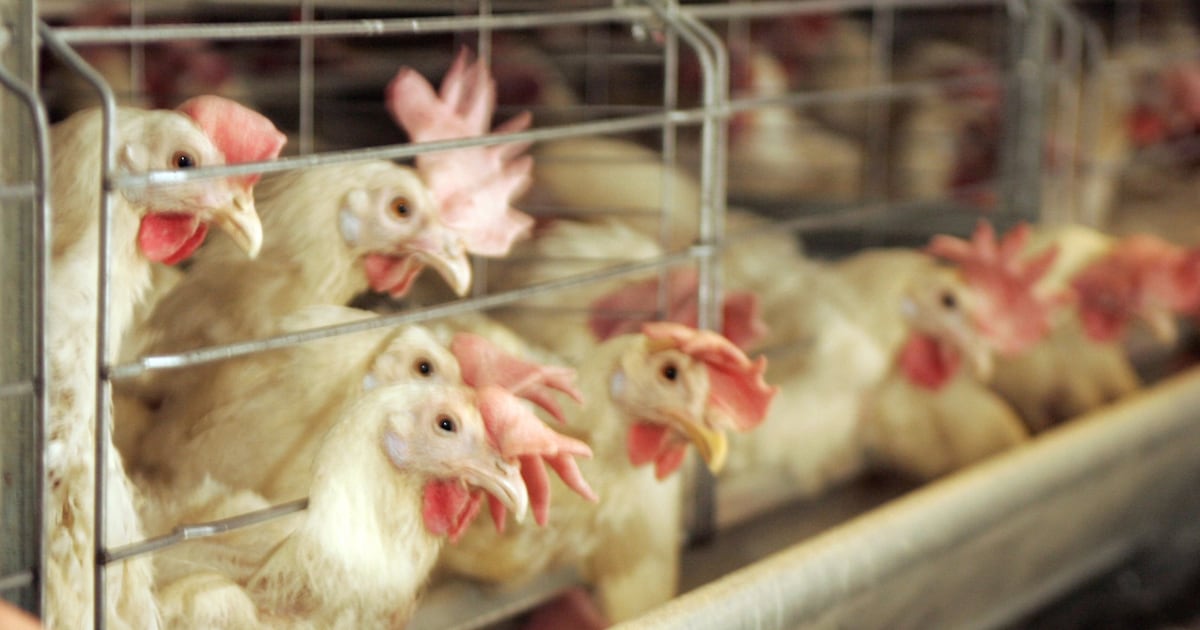
The Centers for Disease Control and Prevention (CDC) assesses the threat of transmission to the general population as low. However, the Ohio Department of Health (ODH) indicates that individuals who have close, prolonged contact with infected birds face an elevated risk.
It is advisable for people to refrain from direct interaction with wild birds or sick and deceased poultry. For additional guidance, they should consult their local health authorities or veterinarians.
Ohio currently records the highest number of Highly Pathogenic Avian Influenza (HPAI) cases in commercial poultry across the United States. Since January 9, over 10.7 million chickens and turkeys have been affected, according to the reports from both the U.S. Department of Agriculture (USDA) and the Ohio Department of Agriculture.
Mercer County, identified as the location of the first probable human case, shows the highest illness rate in Ohio this year, with over 5.7 million cases reported since January 14. Almost 1.2 million cases emerged in February alone, involving more than one million egg-layers, nearly 20,000 pullets (young chickens), and more than 90,300 turkeys.
In Darke County, more than 5 million cases have been reported since January 9. From the beginning of February until February 6, there were 527,629 cases related to over 522,000 laying hens and approximately 5,400 turkeys.
Only two additional locations in Ohio have reported HPAI cases this year, both involving commercial turkeys. On February 5, over 11,000 sick birds were noted in Auglaize County, and on January 30, more than 21,000 birds were reported in Van Wert County in the northwest region of Ohio.
To contain the outbreak, all affected premises have been quarantined, and the sick birds have been culled as reported by the ODA.
Ohio ranks as the second-largest egg producer in the United States, trailing only Iowa, having generated more than 11 billion eggs in 2023. According to the USDA’s 2022 Agricultural Census, the state houses over 20 million broilers and other types of meat chickens, alongside 38.5 million layers and 11.8 million pullets.
For those involved in poultry farming, the ODA adheres to USDA standards for sanitization and disinfection, advising the poultry sector on who may access their facilities and be near the birds, stated Bryan Levin, a public information officer for the state agriculture department.
“Even when best biosecurity practices are in place, halting this disease proves challenging,” noted Caden Buschur, an agriculture and natural resources educator from the Darke County office of Ohio State University Extension. “Wild birds are believed to significantly contribute to the spread of this virus.”
HPAI is not transmitted through properly cooked chicken or eggs. Products originating from any HPAI-affected flocks are strictly prohibited from entering the food supply. However, the ODA advises that all poultry and eggs should be handled and cooked to an internal temperature of 165 degrees Fahrenheit to ensure food safety.
Individuals exposed to sick or deceased birds should monitor themselves for any new respiratory symptoms and should contact their healthcare provider or local health department if any symptoms appear.
As of early 2024, there have been 68 confirmed human cases of this strain of bird flu across 11 states, resulting in one fatality in Louisiana. Most cases stemmed from contact with commercial agriculture or wild birds, and there have been no confirmed instances of human-to-human transmission.
ODH Director Dr. Bruce Vanderhoff emphasized, “While the risk to Ohio residents remains low, the best preventative measure against bird flu is avoiding unprotected contact with sick or deceased birds and their surroundings. Individuals should steer clear of direct contact with poultry and wild birds, and take appropriate precautions, including seeking advice on personal safety and handling practices if they must be near sick or dead birds.”
Ohio residents can report sick or deceased wild birds suspected of HPAI by calling 800-WILDLIFE (945-3543) or visiting wildohio.gov. The following species should be reported:
- Any raptor, like a bald eagle.
- Waterfowl, including ducks and geese.
- Any significant grouping of sick or dead birds.









